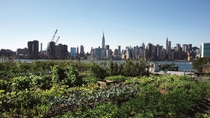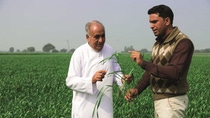Chi siamo
Farmer's fields as nature conservation areas
Highly productive agriculture and the protection of biodiversity – hard to reconcile? On the contrary, as a joint project involving BASF, various farmers and agronomic experts reveals.
Eleven farms in Germany, France, the UK, Italy, Poland and the Czech Republic are leading the way in showing how modern farming throughout Europe can help protect ecosystems. An intact ecosystem in turn benefits farmers through natural pest control, pollination and humus production.
The areas covered by the eleven farms currently in the Farm Network range from soil and water protection to conservation of bird and bee populations. Rawcliffe Bridge, the British pioneering project in Yorkshire, has been demonstrating since 2002 that small measures may have a huge impact. The Farmland Bird Index – one of the best indicators of biodiversity – has climbed steeply during this period. The number of breeding sites is now four times the British national average with no associated decrease in the farm’s productivity.
The principle the farms follow is this: Less fertile areas, such as the edges of fields, are prepared selectively for colonization by plants and animals, while cultivation of cropped land continues as usual. Flower strips provide bees and butterflies with a sumptuous banquet and the seeds attract birds. Deadwood piles are a feast for fungi and bacteria as well as giving shelter to beetles, mice and hedgehogs. Nest boxes and perches invite farmland birds to populate the fields. The farms welcome visitors as an opportunity to show that conserving nature and productive farming can go together.



